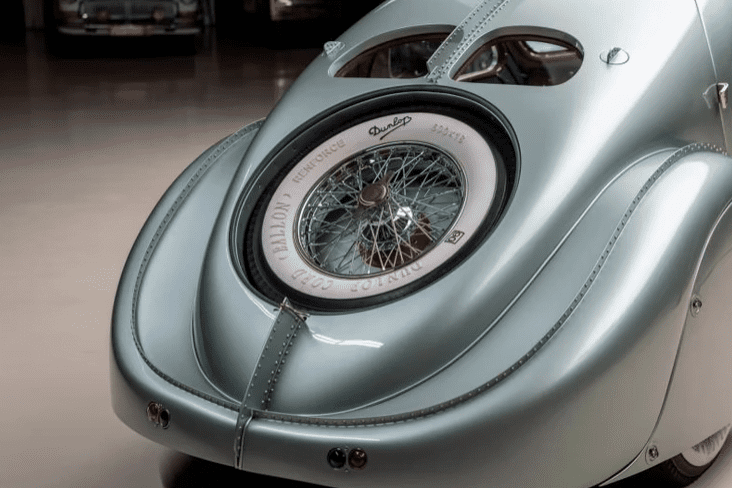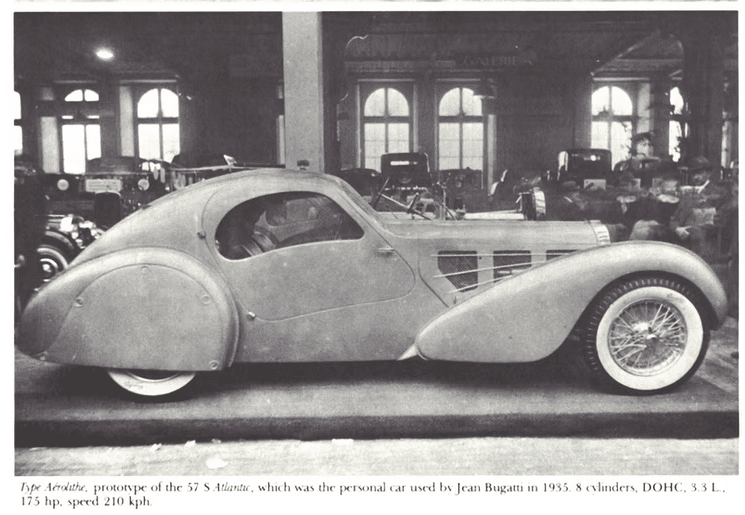Bugatti in the 1930s was like what Bugatti is to us now. Advanced, extravagant, eye-catching, and ground-breaking in numerous ways.
Whether it was for their dominating race cars such as the Type 35 or Type 51, the French manufacturer was not shy from being one of, if not the ultimate manufacturer of its era.
We have seen countless extravagant and pocket emptying Bugatti’s go on sale at auctions these past decades, and we can’t help but notice each model from the pre-war era is either the last standing or is standing in low production numbers. It’s truly disappointing when these perfect mechanical and vintage pieces of art aren’t salvaged, and it is fascinating when countless models are different in their own ways due to coachbuilders and bespoken designs. However, it is the most interesting when an infamous model that represents Bugatti as a whole, went missing decades ago.
The Bugatti Aerolithe represents extravagant and mystery all in one. Supposedly made of an aviation-grade alloy of magnesium and aluminum called Elektron, the 1935 Aérolithe was designed by Ettore Bugatti’s son, Jean Bugatti, who had an eye for art. Its lightweight and flexible body/panels were riveted together due to the difficulty of welding magnesium. Magnesium is almost impossible to work with, as it is a highly flammable metal, and to weld it, it has to be extremely hot. All the body panels on the Aerolithe prototype were riveted together one by one, leaving the stunning exposed rivets lining the car.
The Bugatti Aerolite was taken to the Paris Auto Show in 1935, only one car was made, the Aerolithe was purposely built to be a show car and concept car. Unfortunately, after the show and after being on tour in England, the show car disappeared. It was never seen again, becoming the greatest automotive mystery of all time. Even though the Straight-8 art deco Aerolithe was just a show car for display, it left a massive mark on the Bugatti company. It set the stone and was the base for the iconic Type 57SC Atlantics. Bugatti used the prototype’s stunning elongated features as the base and inspiration for the legendary Type 57 Atlantics which were built out of plain aluminum. European coachbuilders and designers even took on its styling, design, lines, and curves to establish their own techniques.
The kidney-shaped doors, down to the high wheel arches and rear fenders covered by skirts that follow all the way to the narrow bonnet that houses its beautifully crafted inline-8, the Aerolithe might have been seen by the public once, but it left a print in everyone’s mind forever. This was something out of a movie back in the thirties, no one had ever seen design flow so well and so beautifully. It’s the epitome of pre-war design, and Bugatti did it like no other. Yet, the legend was short-lived. The hidden gem of the French brand had been lost, and still stands unknown to this day. Let us not keep the mood so negative, this car was art on wheels, a moving masterpiece as some say. And even though most of it is lost, its history, passion, story, and impact still lives on today.
David Grainger, Bugatti expert and owner of The Guild of Automotive Restoration in Bradford, took up the once and lifetime opportunity to re-create and rebuild one of the most famous pre-war European cars ever to exist, the Bugatti Aerolithe Type 57. He was ready to take the historical challenge and bring it to its limits, and trust me, it was a massive challenge. “We had the original chassis, #57104, along with the original 3.3-liter, 8-cylinder DOHC engine, and its perfect rear axle”. Grainger explained. However, the vehicle was missing a body, and they only had 11 photographs to go to work with and create the same car to perfection. And that’s what they did, they paid close attention to every single detail, from the Dunlop while wall tires, to the magnesium body, and spoke wire wheels.
No ventilation, no windshield wipers, a heavy clutch, heaving steering, and impossible wheels to turn… what a masterpiece. The stripped-down yet fully built Aerolithe was recreated to absolute perfection, it’s not a replica, it’s the exact same car that went onto the stage at the 1935 Paris Auto Show. The teardrop elongated fenders give it the extra wow factor it already had, while the whining inline-8 longs for you to push it to higher revs.
Re-created to perfection, there’s only one in the world. With the one-off Dunlop whitewall tires along with the heavy steering, heavy clutch, and crunchy gear shifts, the Aerolithe is one of the most weirdly interesting and beautiful cars of all time. Down to its wheel skirts, high arched haunches, an elongated sloping rounded rear end which houses the spare tire and is connected by the riveted rear spine, this car is the ultimate design look in the 30s. Not only does it look beautiful on the outside, but the interior is also stunningly crafted as well. Including the center-aligned Jaeger dials in the gauge cluster, and the remarkably simple yet timeless green leather seats.
Handcrafted and built by the hardest metal to work with, Magnesium, the Aerolite is not only light but also powerful for its time, with its 3.3L 8 cylinder beautifully built engine that produces a total of 173bhp, the Aerolithe can crude comfortably on the road. Wearing its tall jewel-like grille proudly, this one-off Bugatti Aerolithe is not a recreation or a “fake” it is a story and a car that has been dearly brought back alive.




